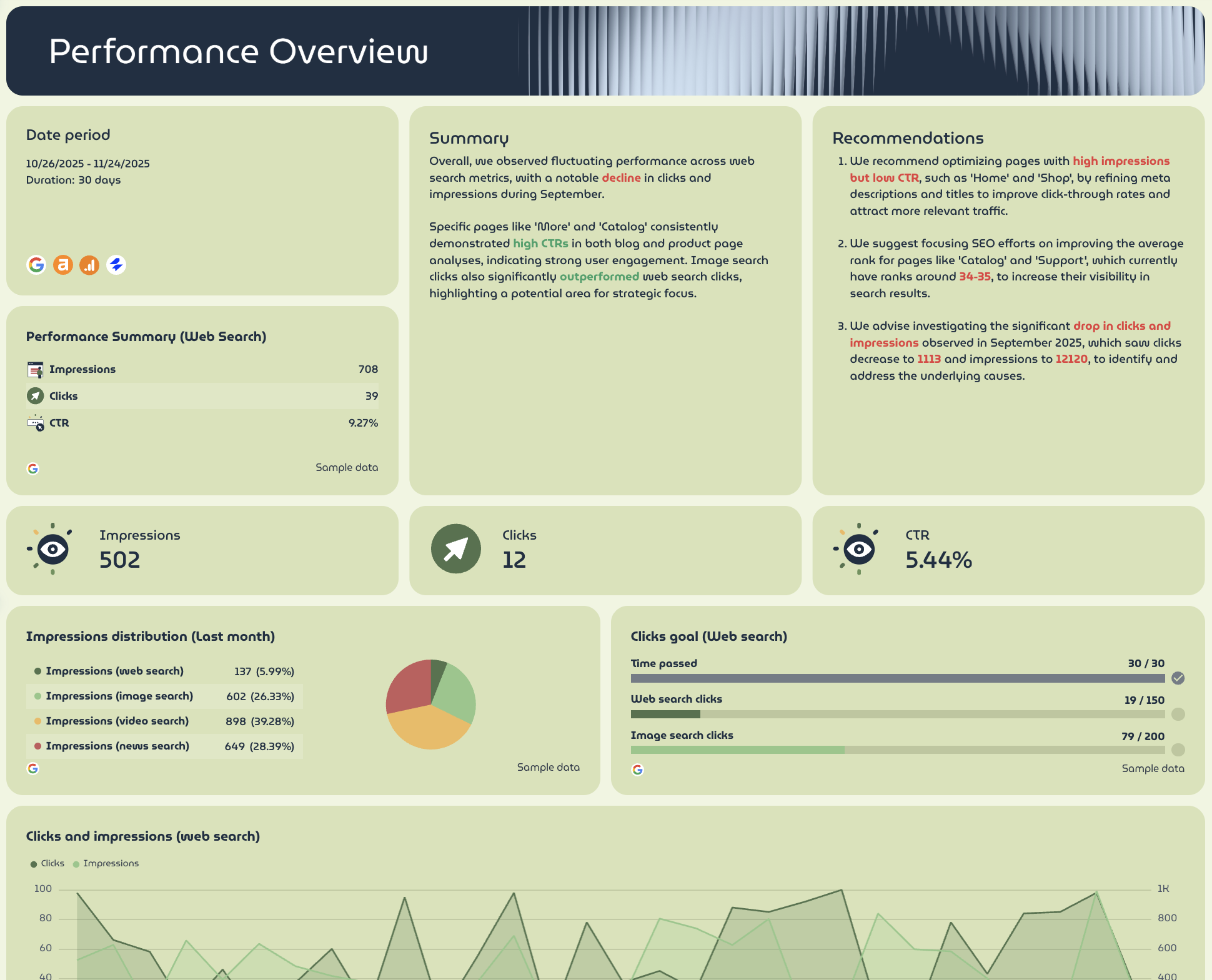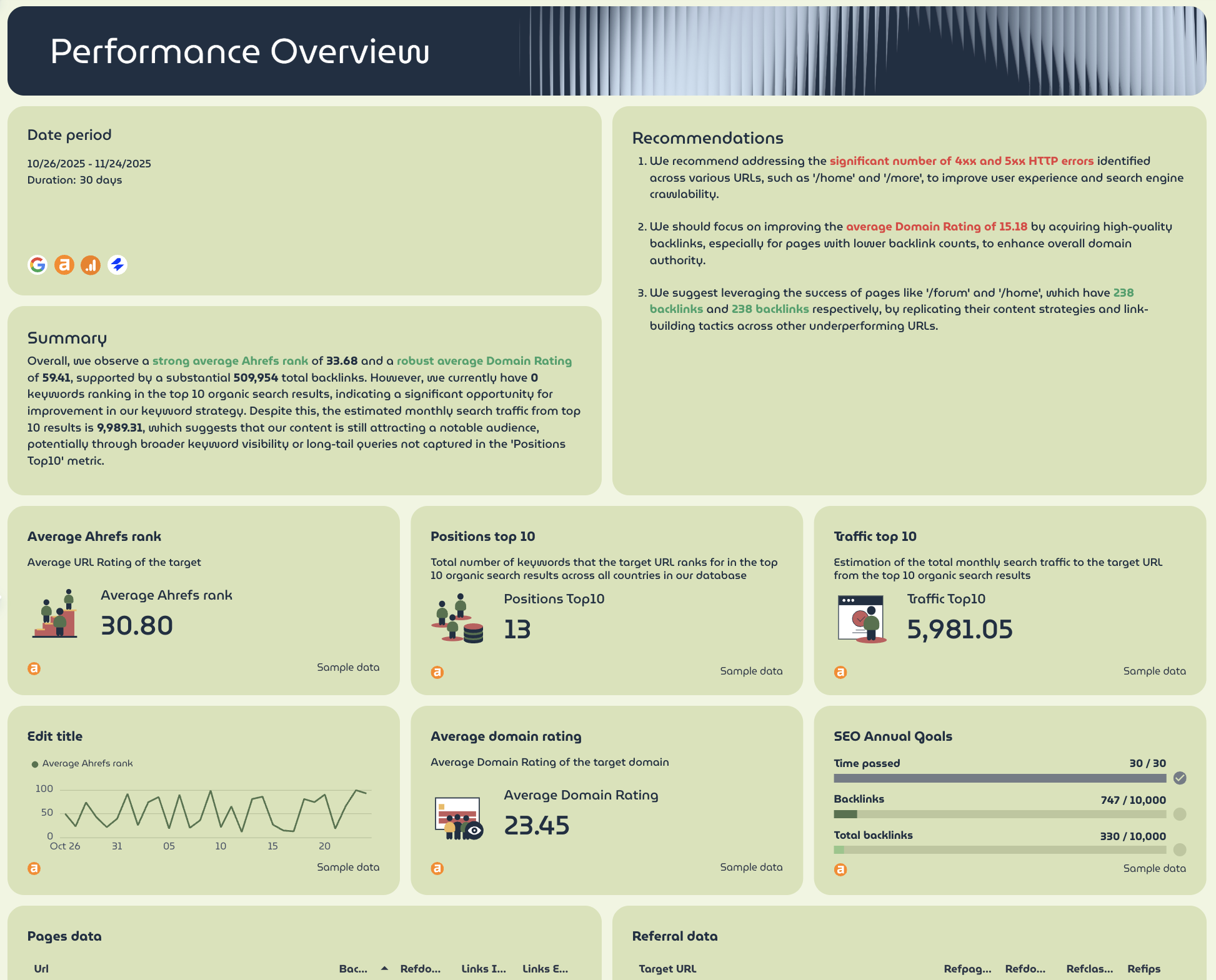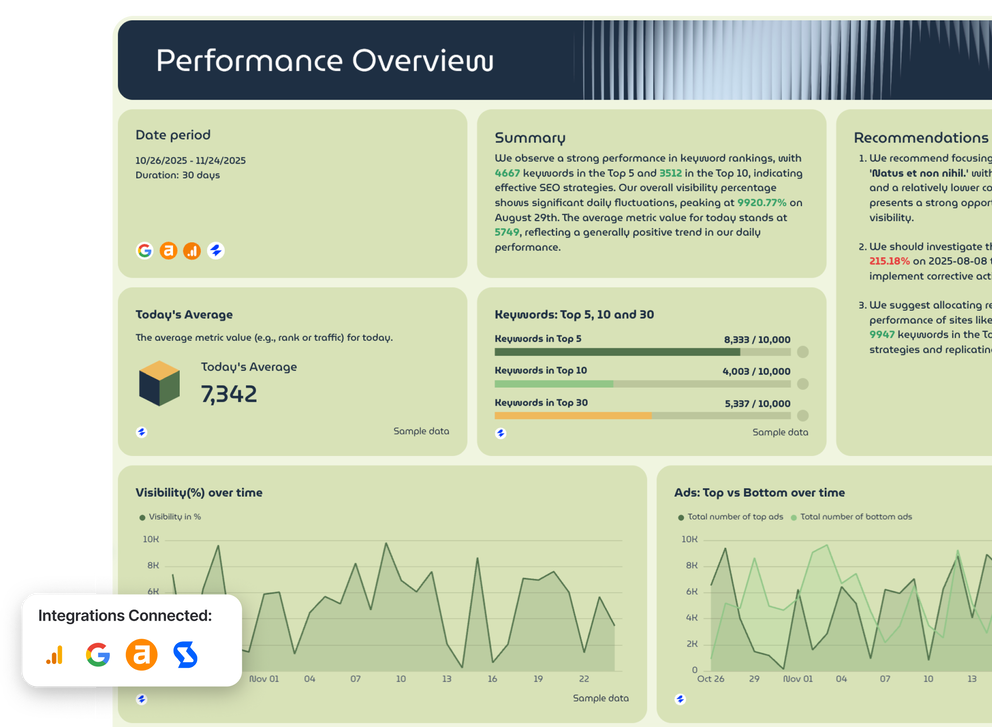What to Include in an SEO Analysis Report Template
A free SEO analysis report template should give a clear, data-driven view of website performance across organic search, rankings, backlinks, and key metrics.
Using a structured layout makes it easier for marketing teams and stakeholders to automate reporting, interpret SEO data, identify issues, and make informed decisions that support your overall SEO strategy.
Below is what it should include based on Whatagraph’s template which was recreated from a leading SEO agency:
1. Organic Search Overview
 This first page gives a complete snapshot of SEO performance, combining Google Search Console, Google Analytics, and organic search metrics.
This first page gives a complete snapshot of SEO performance, combining Google Search Console, Google Analytics, and organic search metrics.
What to include:
- Core SEO metrics: clicks, impressions, CTR, sessions, conversions, and total revenue.
- Organic traffic & organic search trends: graphs comparing clicks and impressions over time (shown on page 1).
- CTR & keyword rankings insights: to reveal how well pages perform in SERPs.
- Engagement metrics: such as bounce rate, conversion rates, and user behavior breakdowns from Google Analytics.
- Landing pages: highlight high-CTR pages and low-CTR pages that need on-page SEO improvements (e.g., meta descriptions or title tags).
- Search visibility & keyword performance: with top-performing keywords and those that dropped (visible in the keyword performance table on page 1).
- Audience insights: demographics, devices, and geographic data to better align SEO efforts with business goals.
- Actionable insights section: provide optimization recommendations such as improving keywords with low rankings or refining pages with low CTR.
This makes the report template effective for monitoring SEO performance, tracking SEO KPIs, and highlighting key metrics stakeholders should see in a monthly report.
2. Keyword Rankings Overview

Whatagraph's SEO keyword report template free page focuses on keyword rankings, SERP behavior, and visibility metrics gathered from SEO tools like SE Ranking or Semrush.
What to include:
- Visibility graphs: showing daily fluctuations and changes in overall search visibility.
- Keyword rankings: number of keywords in the top 5, top 10, and top 30.
- Keyword research insights: search volume, CPC, competition, and keyword performance tables.
- SERP tracking: keyword movement across positions and trends that impact organic rankings.
- Data-driven recommendations: e.g., focus on improving specific keywords with strong search volume and low competition.
- SEO audit insights: identify drops in visibility, potential SEO issues, or corrective actions.
- Search engine optimization metrics: used to streamline improvements and optimize keyword targeting across your SEO campaigns.
This section acts as the backbone for analyzing specific keywords, keyword performance patterns, and how your SEO strategy aligns with broader digital marketing goals.
3. Off-Page and Backlinks Overview

This page evaluates the backlink profile, authority metrics, and link-building opportunities using Ahrefs data.
What to include:
- Backlink analysis: total backlinks, referring domains, and link quality metrics shown on page 3.
- Backlink profile strength: domain authority (Ahrefs DR), URL rating, and average Ahrefs rank for tracked pages.
- Backlink growth & link-building opportunities: which URLs attract the most backlinks and which need attention.
- Technical SEO insights: note issues like 404 pages that appear in the “pages data” table.
- Page-level performance: including HTTP status codes, page titles, and indexability signals.
- Organic search traffic from backlinks: shown in the “Traffic Top 10” section.
- SEO KPIs: metrics that help teams optimize link-building efforts, improve authority, and enhance overall website performance.
- Action steps: replicate successful link-building patterns, fix technical errors, or improve content strategy on weaker pages.
Backlinks remain a crucial ranking factor across search engines, making this section essential in any high-quality SEO analysis report template.





